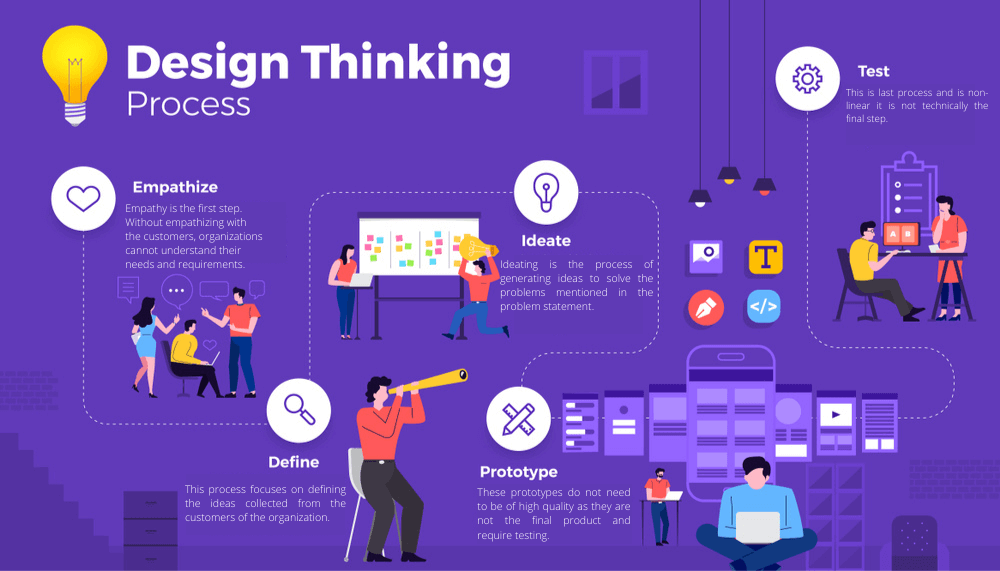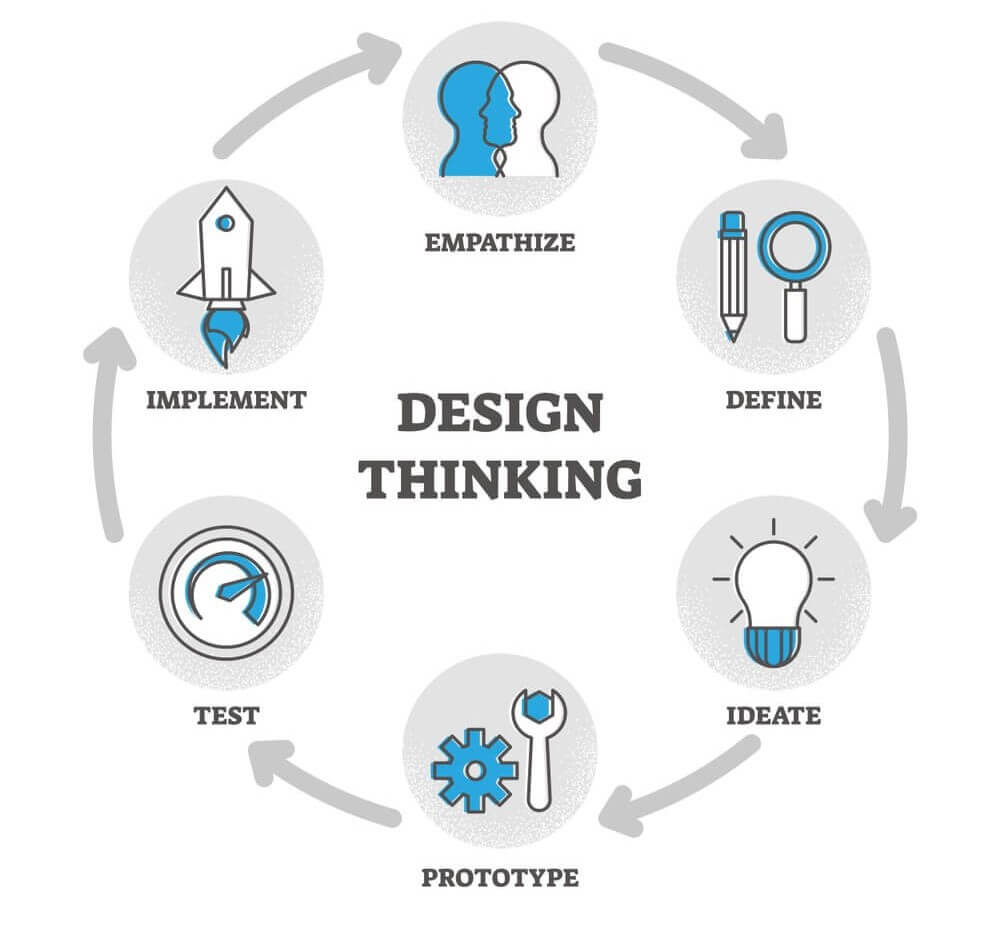Organizations around the world are striving to improve their business processes to match the rapidly changing global economy. New and innovative approaches like Design Thinking have become essential in transforming the business operations for organizations. The concept of design thinking focuses on solving complex problems faced by organizations in their business processes. By applying this innovative mindset, business enterprises can design and create products and services for their customers that effectively meet their requirements as well as that of the organizations.

Jump ahead to
A brief outline of Design Thinking
Design Thinking is a user-centric methodology that helps organizations create solutions based on the feedback of their users. The design thinking approach is very similar to the agile methodology which involves actively engaging the end-users of the product or software. However, unlike agile thinking that deals with solving defined problems gathered through collaboration with the users, design thinking finds the problems to solve. These problems are usually complex and require out-of-the-box thinking to solve.
Some examples of organizational problems that require the design thinking approach are changing the entire product portfolio to bring in new customers, re-building the organizational structure to eliminate poor office culture, dealing with the product delivery system in an event of a crisis, and so on. These complex problems sometimes known as wicked problems have no fixed solution and can change anytime. Thus, design thinking is the answer to solving wicked problems faced by business enterprises around the world.
Importance of the Design Thinking Process
Creativity and innovative thinking are the main attributes of design thinking. Problem-based thinking prevents the application of innovative ideas and focuses on a linear solution-finding approach. There are 5 steps in the design thinking process. This process is non-linear where teams can go back and forth between different steps. Instead of fixating on obstacles and limitations, the design thinking approach emphasizes the outcomes of the process.
The design thinking process involves a series of simple steps or stages to find the problem faced by the organization and its customers. The prime objective of this approach is to deal with any problems from a human perspective. This helps the teams involved in the design thinking process of finding the solution to collaborate and brainstorm together. This results in building a collaborative office culture in the organization and improves productivity.
5 Steps of Design Thinking Process
As discussed above, the design thinking process is conducted in five stages or steps. These steps help organizations in creating products and services for their customers by understanding their needs and requirements. Here are the 5 steps of the design thinking process:

Empathize
Empathy is the first step of the design thinking process. Without empathizing with the customers, organizations cannot understand their needs and requirements. User surveys and personal contacts with the customers of the organization will result in gaining insights into their mindset and priorities. Empathize forms the main ideology of design thinking as it transforms the business and the corporate requirements into human requirements. This stage of the design thinking process is all about eliminating any pre-defined assumptions and notions that the organization has about its customers and collecting ideas from them even though they are not properly defined.
Define
The second step of the design thinking process focuses on defining the ideas collected from the customers of the organization. Some of the ideas or information collected in the empathize stage may not be clear or defined properly by the users. These ideas need to be defined concisely so that all the stakeholders of the organization can understand the customer needs. These defined problems will be formulated into a problem statement that the design teams will use to find the solution in the later stage of the design thinking process.
Ideate
Ideating is the process of generating ideas to solve the problems mentioned in the problem statement. In this stage, design teams will collaborate with the product or software development teams to ideate. This step of the design thinking process requires teamwork and effective communication between cross-functional teams to succeed in formulating feasible ideas. Every member should be allowed to voice their opinions and given the chance of supporting their arguments. This will result in the proposal of several ideas, among which some innovative ideas will stand out and lead to the success of the design thinking process.
Prototype
Those innovative ideas can then be developed further with the help of the product or software development team into a working model of the real product or service known as a prototype. These prototypes do not need to be of high quality as they are not the final product and require testing.
Test
Testing is the fifth stage of the design thinking process, however, since this process is non-linear it is not technically the final step. Prototypes of the product created will be rigorously tested by the design and product development teams along with a select group of users. They will provide feedback on the prototype which will again be used by the design and product development teams. Therefore, the final product that will be available to the customers of the organization will effectively fulfill their requirements and meet the objectives of the organization as well.
Conclusion
The non-linear nature of the design thinking process makes it possible for design teams and the entire product development team to re-visit each step at any stage of the product design or development process. Each step feeds the other in the design thinking process. Thus, making it a constant loop of learning and formulating ideas. Organizations use design thinking to create goods and services that can handle the demands of the contemporary world.
Wicked problems that our world is currently facing like climate crisis, plastic pollution, garbage disposal, and many more can be solved with the help of the design thinking approach. Therefore, Learning about this innovative approach of design thinking will help individuals participate in the creation of several life-changing solutions. Moreover, this will have a positive impact on the present world population and the future generation.



